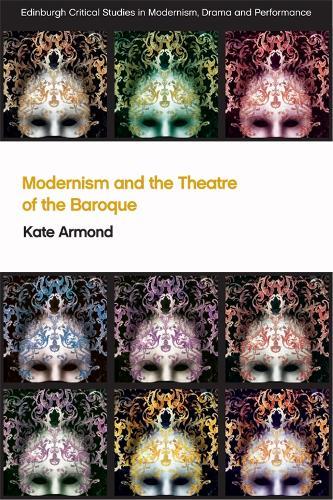Overview
First comparative study to address the rediscovery of baroque aesthetic in modernism Did you know that seventeenth-century philosophy influenced dance theory and evolutionary science during the modernist period? Or that in England, Italy and Germany the term 'baroque' was used almost exclusively as an insult until the 1900s? Modernism and the Theatre of the Baroque fashions an independent aesthetic for modernist writers and texts that challenges many high modernist qualities promoted by James Joyce and T. S. Eliot. Providing a fresh interpretation of the works of Djuna Barnes, Wyndham Lewis, Edward Gordon Craig and Isadora Duncan, the book broadens our understanding of modernist priorities and demonstrates how readily these ideas translate across genres. It shows that modernists are not passive recipients of baroque stereotypes but are instead painstaking in their research and innovative in their reworking of original sources. This is an introduction to key ideas, characters and techniques that will allow the baroque to be used as a conceptual and historical framework for analysing modernist achievements, thereby opening up new opportunities for further research. Key features Fashions an independent aesthetic for modernist writers and texts that challenges many high modernist qualities promoted by James Joyce and T. S. EliotProvides new connections between philosophy/critical theory and modernist culture, links that are relevant to both popular and academic interestIntroduces key ideas, characters and techniques that allow the baroque to be used as both a conceptual and historical framework for analysing modernist achievements, thereby opening up new opportunities for research, and demonstrating how readily these ideas translate across genre
Full Product Details
Author: Kate Armond (Lecturer in International Modernism, University of Essex)
Publisher: Edinburgh University Press
Imprint: Edinburgh University Press
Weight: 0.434kg
ISBN: 9781474419628
ISBN 10: 1474419623
Pages: 192
Publication Date: 18 December 2017
Audience:
College/higher education
,
Undergraduate
,
Postgraduate, Research & Scholarly
Format: Hardback
Publisher's Status: Active
Availability: Manufactured on demand

We will order this item for you from a manufactured on demand supplier.
Reviews
Armond deftly uses the baroque to carve out new interpretative space for canonical modernist texts.--Genevieve Amaral, Temple University ""Modernism/modernity"" Armond's practice-informed, baroque-centred rendering of Craig's term provides a new way to understand it, contributing to theatre historiography in a fascinating way. --Claire Warden ""Modernist Cultures""
"Armond deftly uses the baroque to carve out new interpretative space for canonical modernist texts.--Genevieve Amaral, Temple University ""Modernism/modernity"" Armond's practice-informed, baroque-centred rendering of Craig's term provides a new way to understand it, contributing to theatre historiography in a fascinating way. --Claire Warden ""Modernist Cultures"""
Author Information
Kate Armond is Lecturer in International Modernism at the University of Essex. Her first monograph Modernism and the Theatre of the Baroque was published by Edinburgh University Press in 2017, and her research interests include Comparative Literature, Modernism, Evolutionary Science, Marxist theory, Philosophy, and Performance Studies. Her work has been published in Textual Practice Modernist Cultures, The Journal of Wyndham Lewis Studies, The Literary Encyclopaedia, TES and in edited collections.




